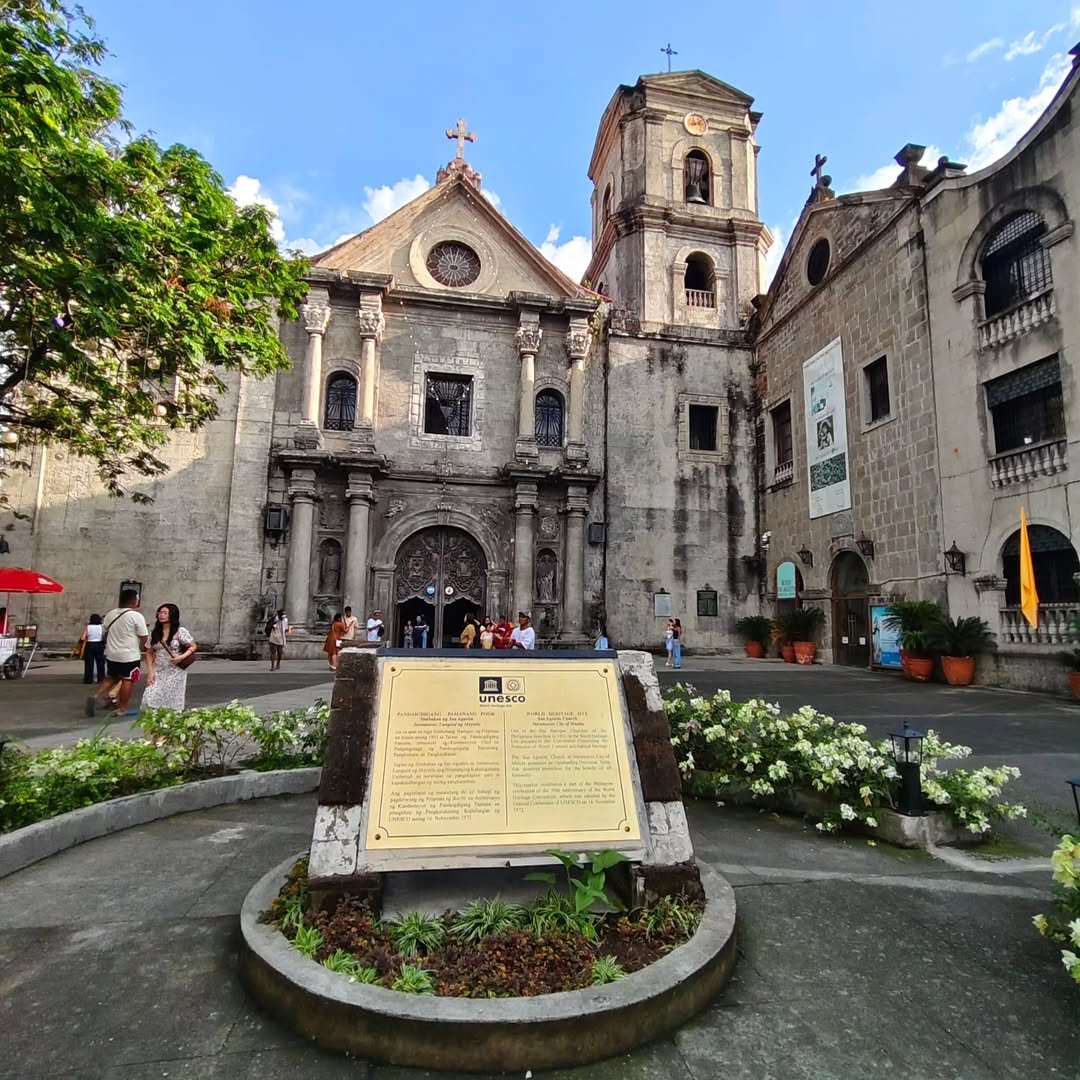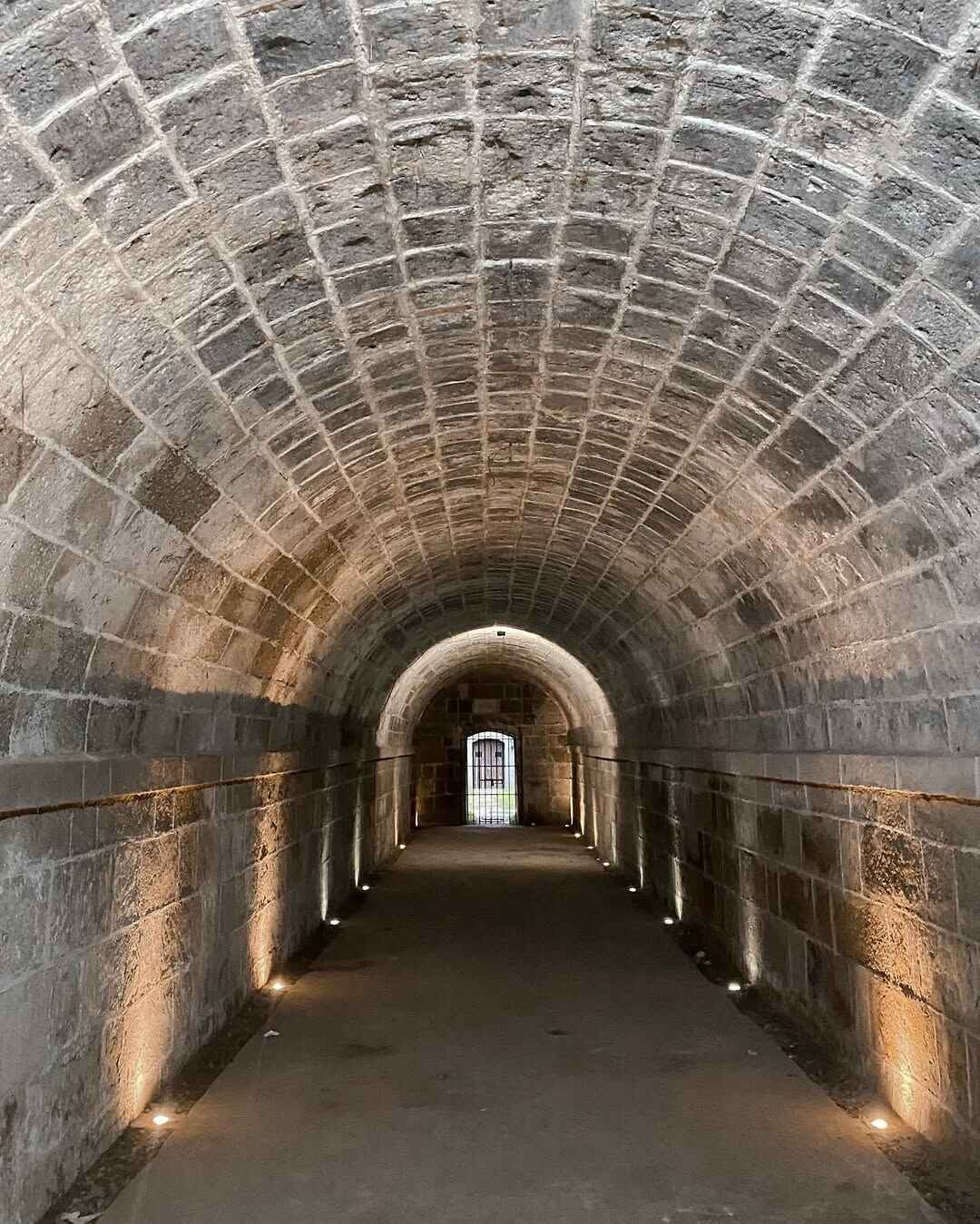
Introduction to Fort Santiago
A Historic Treasure in the Heart of Manila
Nestled within the walled city of Intramuros, Manila, Fort Santiago stands as one of the most significant historical landmarks in the Philippines. This Spanish-era fortress, constructed in 1571 by the Spanish conquistador Miguel López de Legazpi, has withstood the test of time, witnessing centuries of colonial rule, wars, and revolutions. Today, Fort Santiago serves as a national shrine and museum, offering visitors a glimpse into the country’s rich history and cultural heritage.
With its stunning Spanish-inspired architecture, centuries-old walls, and picturesque gardens, Fort Santiago has become a must-visit tourist destination. It is particularly known for being the prison of Dr. José Rizal, the Philippines’ national hero, before his execution in 1896. Visitors can explore the dungeons of Fort Santiago, where countless prisoners were once held, and Fort Santiago museum, which houses artifacts, documents, and exhibits about Rizal’s life and works.
Why Visit Fort Santiago?
Many travelers search for Fort Santiago entrance fee 2025 and Fort Santiago opening hours when planning their itinerary, as this historical site remains one of the most popular attractions in Manila. Whether you’re a history enthusiast, a culture buff, or simply looking for a serene place to visit, Fort Santiago offers a unique experience. Visitors can walk along its stone-paved pathways, marvel at the majestic fortifications, and immerse themselves in the stories of the past.
For those wondering, what is Fort Santiago known for? The answer is its historical significance, military architecture, and the role it played during the Spanish, American, and Japanese occupations. It is also famous for its picturesque views, making it a perfect spot for photography and sightseeing.
What You Will Learn in This Guide
This comprehensive guide will provide essential tourist information about Fort Santiago, including:
- A deeper look into Fort Santiago history
- How to go to Fort Santiago and the best travel routes
- Fort Santiago location and accessibility
- Fort Santiago opening time and Fort Santiago closing time
- Things to do inside Fort Santiago
- The best time to visit Fort Santiago for an unforgettable experience
Whether you are planning a self-guided tour or looking for the best Fort Santiago tour packages via Klook Fort Santiago, this guide will help you explore Fort Santiago Intramuros like a seasoned traveler. Keep reading to uncover the secrets of this fortress of resilience and history.
Table of Contents
History and Significance of Fort Santiago
The Founding of Fort Santiago
The history of Fort Santiago dates back to 1571, when Spanish conquistador Miguel López de Legazpi established it as the primary military defense fortress in Intramuros, Manila. Initially built using earth and logs, the fort served as a strategic stronghold for the Spaniards to protect their colony from pirates, foreign invaders, and local uprisings. However, after suffering repeated attacks from Chinese and Dutch pirates, the Spanish authorities reinforced Fort Santiago Intramuros with stone walls in the late 16th century.
During the Spanish era, Fort Santiago became a key military garrison and detention facility. Its fortified walls and strategic location at the mouth of the Pasig River made it an important trade and defense hub. Over the centuries, the fort bore witness to various colonial battles, uprisings, and regime changes, solidifying its reputation as one of the most important landmarks in Philippine history.
The Role of Fort Santiago in Philippine History
Throughout the Spanish, American, and Japanese occupations, Fort Santiago played an essential role in the Philippines’ military and political landscape. It was used as a prison and torture chamber for both rebels and political prisoners, including notable Filipino revolutionaries and freedom fighters.
The Dungeon of Fort Santiago: A Silent Witness to Tragedy
Inside Fort Santiago, visitors can explore the dungeons of Fort Santiago, which were used as detention cells and execution chambers during World War II. The dungeon Fort Santiago gained notoriety during the Japanese occupation (1942-1945), when it became a torture chamber for Filipino and American prisoners of war. Many detainees suffered from inhumane conditions, starvation, and summary executions, making the dungeons of Fort Santiago a grim reminder of the fort’s dark past.
Even before World War II, the Spanish and American colonial rulers used the Fort Santiago dungeons to imprison Filipino revolutionaries, including the Katipuneros, who fought for independence. Today, Fort Santiago museum features exhibits and historical accounts that pay tribute to the many lives lost within its walls.
Fort Santiago Rizal: The Final Footsteps of a National Hero
Perhaps the most significant chapter in Fort Santiago history is its connection to José Rizal, the Philippines’ national hero. Known for his literary works and advocacy for peaceful reform, Rizal was detained in Fort Santiago before his execution on December 30, 1896, by Spanish authorities.
During his imprisonment, Rizal wrote his farewell poem, “Mi Último Adiós”, which is now regarded as one of the most important pieces of Philippine literature. His prison cell, now part of the Fort Santiago museum, displays artifacts, handwritten letters, and personal belongings that provide insight into his final days.
Visitors can retrace Rizal’s final footsteps along the Fort Santiago grounds, where bronze footprints lead from his cell to Bagumbayan (now Rizal Park), where he was executed. This historical marker allows tourists to reflect on the sacrifices made in the fight for Philippine independence.
Fort Santiago Today: A Symbol of Strength and Resilience
Today, Fort Santiago Philippines stands as a historical and cultural treasure, preserved as part of Intramuros’ heritage sites. The Fort Santiago museum showcases memorabilia, photographs, and exhibits related to Philippine history, military strategies, and Rizal’s legacy.
Visitors can explore the fort’s bastions, moats, and gardens, as well as take a closer look at Fort Santiago activities, such as guided tours and interactive historical exhibits. For those planning a trip, Fort Santiago location is easily accessible, and tourists often check Fort Santiago opening time, Fort Santiago closing time, and Fort Santiago entrance fee 2025 before visiting.
Whether you’re interested in photography, history, or cultural exploration, Fort Santiago Intramuros offers an immersive experience into the Philippines’ past. From the haunting tales of the dungeon Fort Santiago to the legacy of José Rizal, this historic site remains a testament to the country’s resilience and undying spirit.
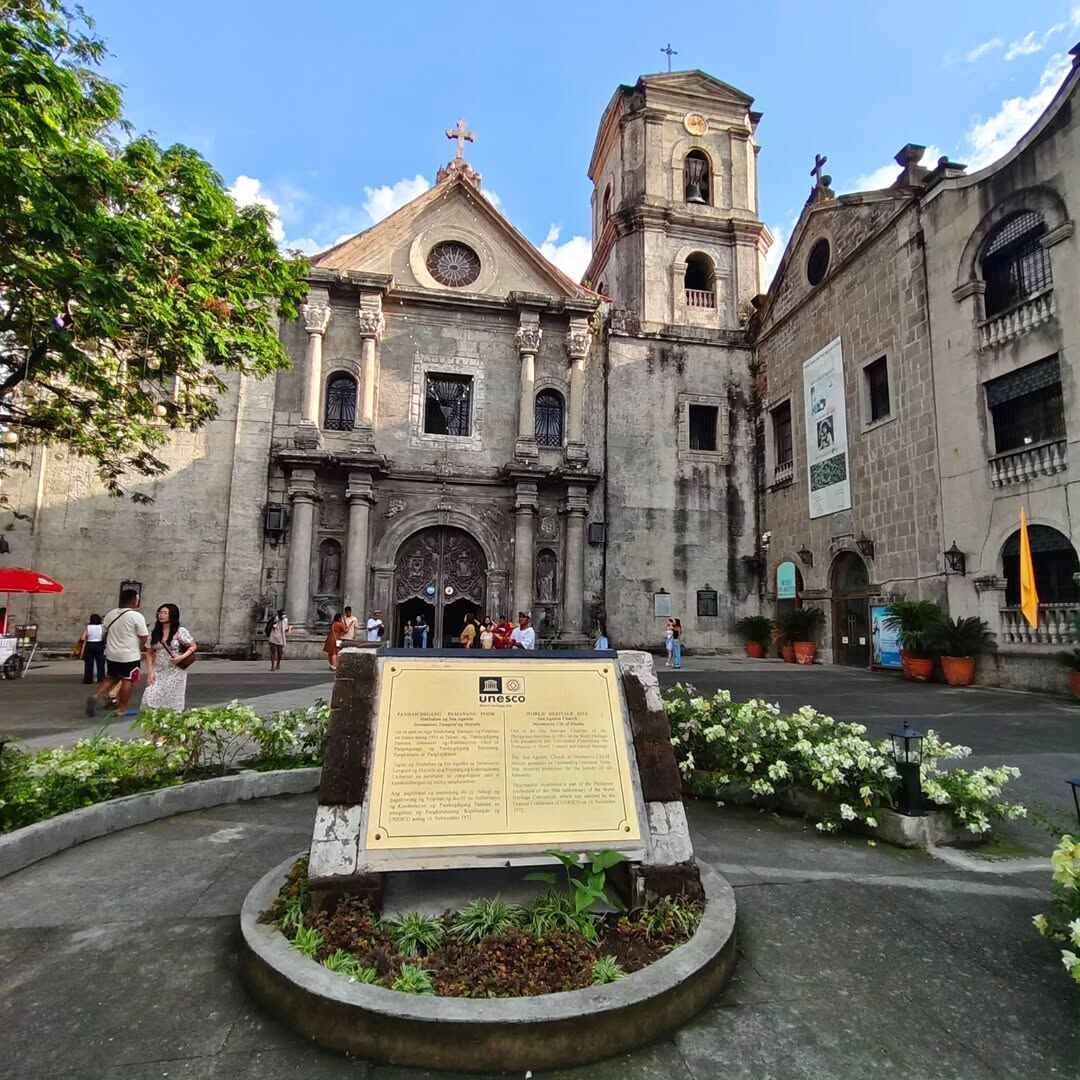
How to Get to Fort Santiago
Where is Fort Santiago Located?
Many tourists ask, “How to go to Fort Santiago?” as it is one of the most visited historical sites in Manila. Fort Santiago location is within the walled city of Intramuros, near other major landmarks such as Manila Cathedral and San Agustin Church.
The fortress is easily accessible from various parts of Metro Manila, making it a convenient destination for both local and international travelers. Whether you’re commuting via public transportation or traveling by private vehicle, here’s a guide to ensure a smooth journey to Fort Santiago Intramuros.
Public Transportation Options
Manila has a well-connected transportation system that makes it easy and affordable to reach Fort Santiago Philippines. Here are the best options:
1. LRT 1 (Light Rail Transit)
- Take LRT 1 and drop off at Central Terminal Station.
- From there, ride a jeepney heading towards Intramuros or take a tricycle to Fort Santiago.
- Walking is also an option, as Fort Santiago Intramuros is about 10-15 minutes on foot from the LRT station.
2. Jeepneys
- Jeepneys are a popular and budget-friendly way to reach Fort Santiago location.
- Look for jeepneys with the route sign “Pier” or “Intramuros” as they pass through the walled city.
- Another option is taking a Lawton-bound jeepney, which stops near Intramuros.
3. Taxis and Grab
- Taxis and Grab (ride-hailing service) offer a more comfortable and direct route to Fort Santiago Philippines.
- This is a great option if you are traveling with family, carrying luggage, or prefer convenience.
- Expect fares to vary depending on traffic conditions.
Now that you know how to go to Fort Santiago, you can plan your visit with ease. Whether you choose public transport, a private vehicle, or a guided tour, getting to this iconic Spanish fortress is a straightforward and enjoyable experience.
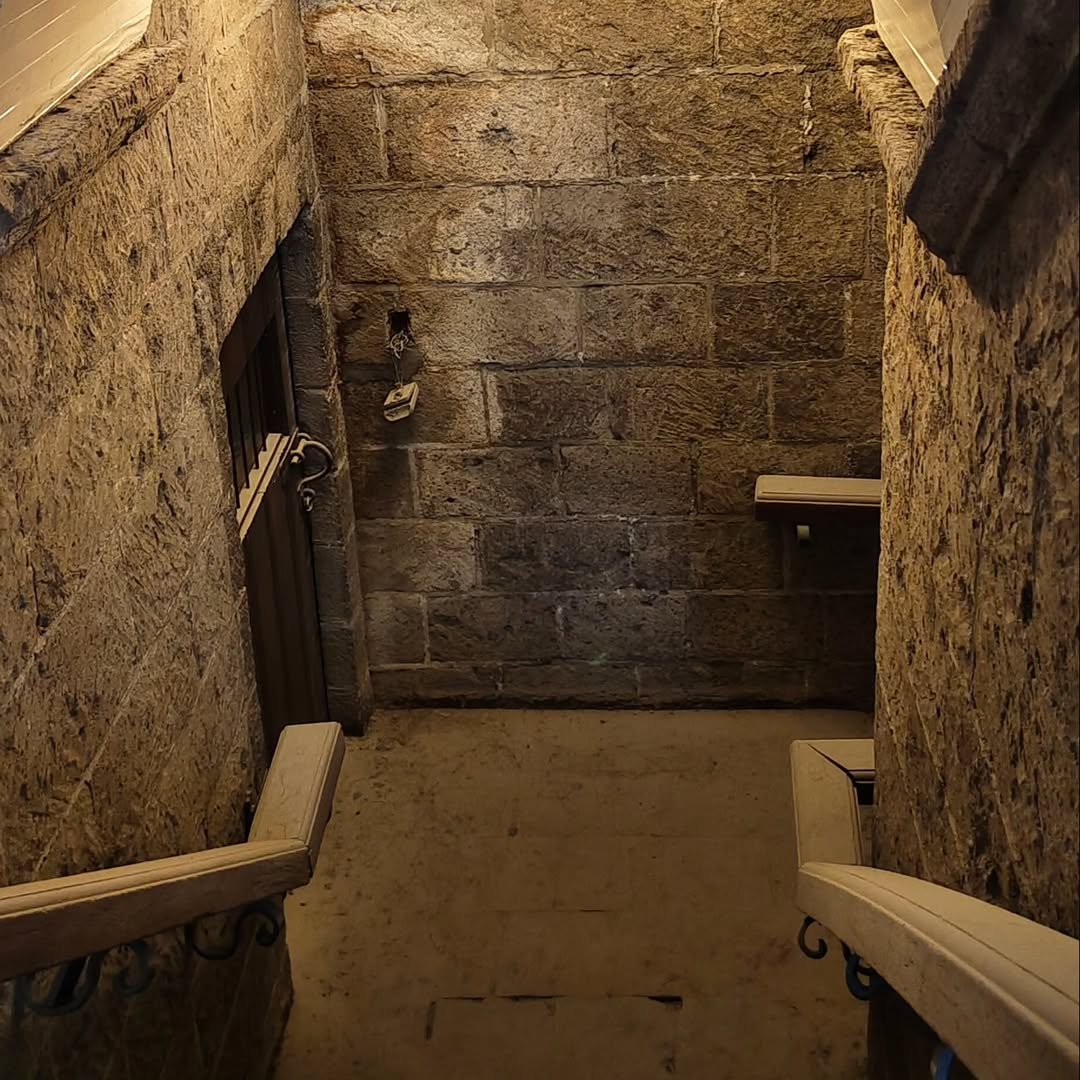
Entrance Fees and Opening Hours of Fort Santiago
Fort Santiago Entrance Fee 2025: How Much Does It Cost to Visit?
One of the most frequently asked questions by visitors is “How much is the entrance fee for Fort Santiago?” If you’re planning your trip, knowing the Fort Santiago entrance fee 2025 can help you budget accordingly.
As of 2025, the current Fort Santiago tickets are priced as follows:
- Adults: ₱75
- Students and Senior Citizens: ₱50 (Discounted rates apply with valid ID)
- Foreign Tourists: ₱200
The entrance fee covers access to Fort Santiago Intramuros, including its bastions, dungeons, gardens, and historical exhibits. For those looking for a more immersive experience, Fort Santiago tour packages are available via Klook Fort Santiago, which include guided tours, kalesa rides, and visits to nearby landmarks.
Fort Santiago Opening Time and Closing Time
Many tourists check Fort Santiago opening time and Fort Santiago closing time to plan their itinerary effectively. The official operating hours are:
- Fort Santiago opening time: 8:00 AM
- Fort Santiago closing time: 6:00 PM
Visitors are encouraged to arrive early to fully explore the fort and avoid crowds, especially on weekends and holidays.
Best Time to Visit Fort Santiago
- Morning Visits (8:00 AM – 10:00 AM): Ideal for avoiding Manila’s heat and crowds. Perfect for photography and historical exploration.
- Afternoon Visits (4:00 PM – 6:00 PM): Best for enjoying a cooler climate, taking sunset photos, and experiencing less foot traffic.
- Avoiding Crowds: Weekdays are generally less crowded, while weekends and holidays see an influx of tourists.
Special Events, Temporary Closures, and Guided Tours
It’s always a good idea to check for updates on Fort Santiago tickets, guided tours, or special events before visiting. Occasionally, portions of Fort Santiago may be closed for renovations, private events, or official ceremonies.
For a more engaging experience, visitors can book a Fort Santiago tour through platforms like Klook Fort Santiago, which offers historical tours with expert guides. Some packages also include visits to other Intramuros attractions like San Agustin Church, Casa Manila Museum, and Baluarte de San Diego.
By planning ahead and checking the Fort Santiago entrance fee 2025, Fort Santiago opening time, and available tours, visitors can make the most of their trip to this historic Spanish-era fortress in the heart of Manila.
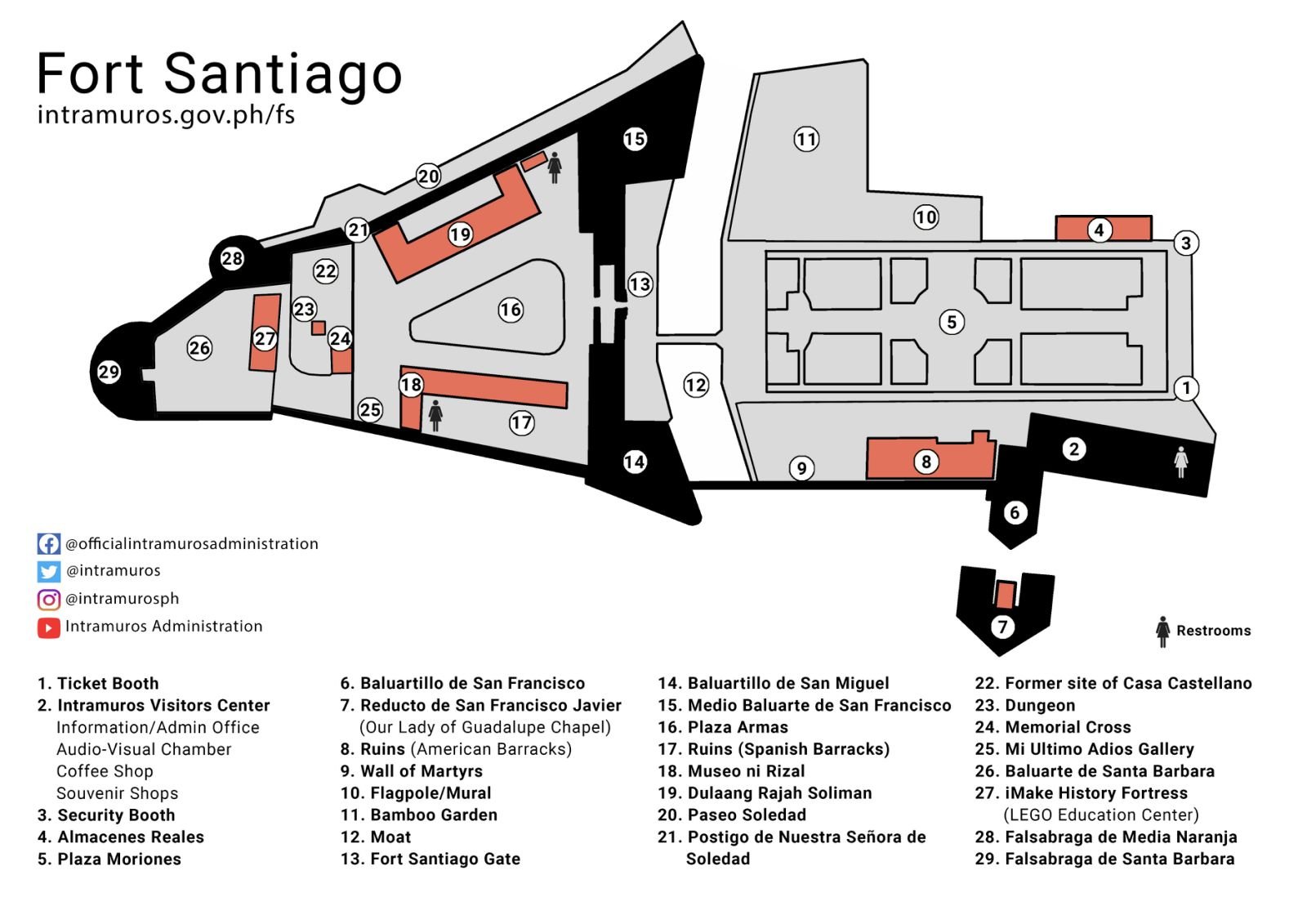
Things to See and Do in Fort Santiago
Exploring Fort Santiago Intramuros is a journey through centuries of Philippine history. This Spanish-era fortress is filled with historical landmarks, scenic views, and interactive exhibits that make it a must-visit destination for both locals and tourists. Whether you’re interested in history, architecture, or photography, there are plenty of Fort Santiago activities to keep you engaged.
Top Attractions Inside Fort Santiago
1. Fort Santiago Museum – A Tribute to José Rizal
The Fort Santiago museum is one of the most significant stops inside the fortress. It houses artifacts, writings, and memorabilia related to José Rizal, the national hero of the Philippines. The museum is located in the building where Rizal was imprisoned before his execution in 1896.
What You Can See Inside the Museum:
- José Rizal’s prison cell – A somber yet powerful exhibit showing where Rizal spent his final days.
- Handwritten letters and manuscripts – Get a glimpse of Rizal’s final writings, including “Mi Último Adiós”.
- Personal belongings – View Rizal’s clothes, books, and other items used during his imprisonment.
This museum is a must-visit for history enthusiasts, as it provides deep insight into Rizal’s contributions to Philippine independence.
2. The Dungeons of Fort Santiago – A Haunting Reminder of the Past
One of the most chilling parts of Fort Santiago history is the dungeons of Fort Santiago, where prisoners were detained, tortured, and executed. These underground chambers were used by Spanish, American, and Japanese forces to imprison political dissidents, revolutionaries, and prisoners of war.
Why Visit the Dungeon of Fort Santiago?
- Learn about its dark past – The dungeon Fort Santiago has seen the suffering of Filipino revolutionaries and WWII prisoners.
- Haunting atmosphere – The low-ceilinged, dimly lit passageways create a somber mood, allowing visitors to reflect on history’s tragedies.
- Memorial plaques – These commemorate the victims who lost their lives inside Fort Santiago Intramuros.
Visiting the dungeon Fort Santiago is a solemn yet educational experience, perfect for those who want to deepen their understanding of the country’s past.
3. Scenic Walks and Spanish-era Architecture
Fort Santiago Philippines is not only rich in history but also visually stunning. Its Spanish-style walls, arched gateways, and tranquil gardens provide a peaceful escape from Manila’s busy streets.
Key Photography Spots:
- The iconic gate of Fort Santiago – A massive stone entrance decorated with Spanish-era carvings.
- The stone walls and bastions – Capture classic Fort Santiago photos with scenic backdrops of Manila’s skyline.
- Plaza Moriones and Fort Santiago gardens – Ideal spots for picnics, strolls, and quiet reflection.
Whether you’re a photographer, history buff, or casual traveler, the architectural beauty of Fort Santiago will surely impress you.
Fort Santiago Activities for Visitors
Aside from historical exploration, Fort Santiago Intramuros offers a variety of interactive activities that make your visit more engaging and memorable.
1. Walking Tours and Self-Guided Exploration
Visitors can explore Fort Santiago on foot, following the stone pathways that lead to historical landmarks, statues, and underground chambers.
- Self-guided tours – Walk at your own pace using a Fort Santiago map to navigate the fortress.
- Historical markers – Read the plaques and descriptions that explain the fort’s history.
If you prefer a structured tour, there are also guided options available.
2. Guided Tours and Klook Fort Santiago Packages
For a deeper understanding of the historical significance of Fort Santiago, consider booking a guided tour. Klook Fort Santiago offers package tours that include:
- Professional tour guides who provide detailed insights into Fort Santiago history.
- Kalesa (horse-drawn carriage) rides around Intramuros for a more authentic Spanish-era experience.
- Multi-site packages, including visits to San Agustin Church, Casa Manila, and Baluarte de San Diego.
Booking a Fort Santiago tour through Klook Fort Santiago ensures you maximize your experience while learning from expert storytellers.
3. Evening and Nighttime Visits
While Fort Santiago closing time is 6:00 PM, there are special night tours and events held occasionally.
- Historical reenactments – Live performances that showcase Spanish colonial history.
- Cultural exhibits – Art and music events held in Plaza Moriones.
- Night photography sessions – Capture the fort under the soft glow of lanterns.
Always check in advance if night tours or special events are available during your visit.
For the best experience, remember to check Fort Santiago opening time and Fort Santiago closing time, and consider booking a tour through Klook Fort Santiago to make the most of your visit.
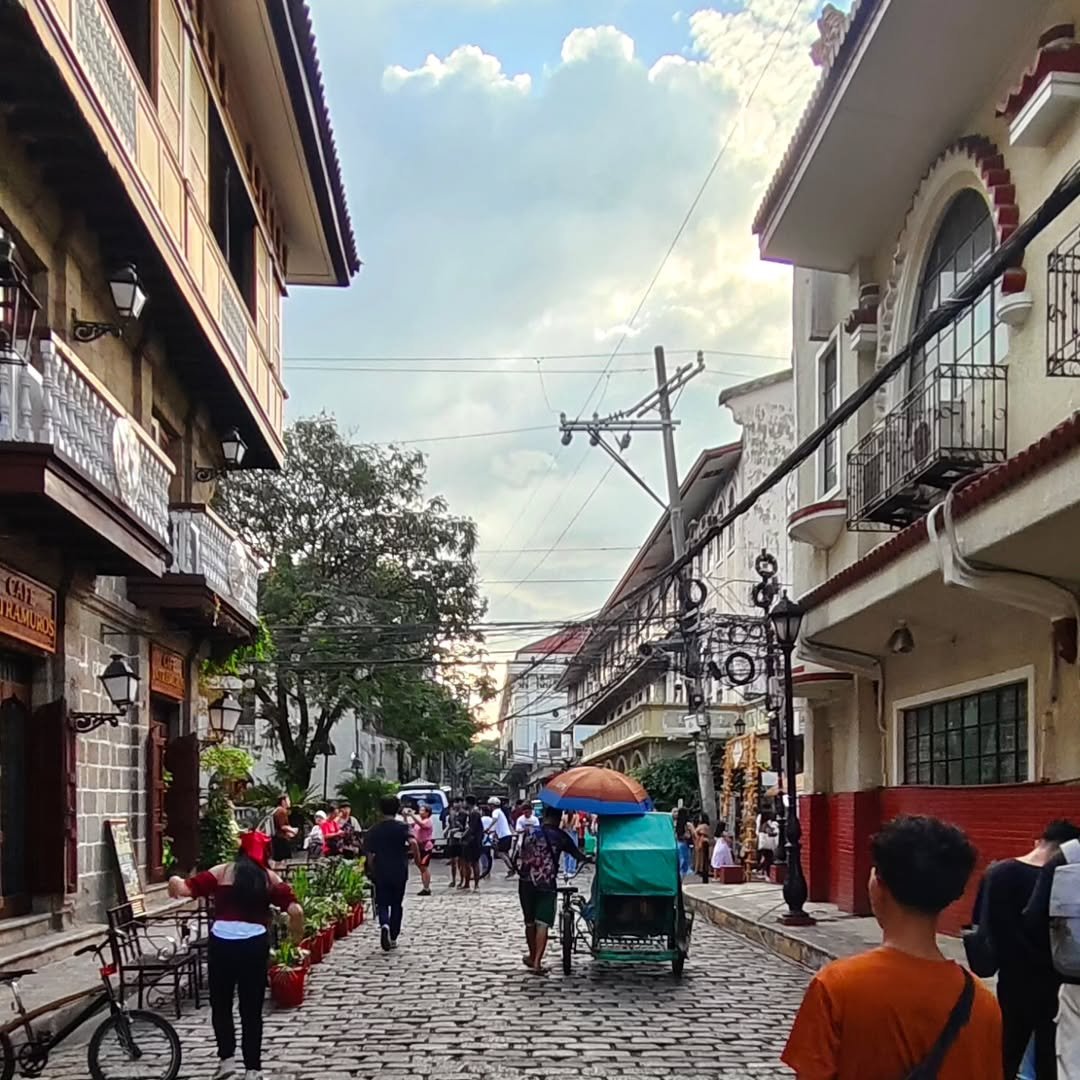
Where to Stay Near Fort Santiago
Finding the right accommodation near Fort Santiago Intramuros can enhance your travel experience by providing convenience, comfort, and accessibility to Manila’s historic district. Whether you’re looking for luxury hotels, mid-range accommodations, or budget-friendly options, there are plenty of places to stay near Fort Santiago Philippines that cater to different needs and budgets.
Luxury Hotels Near Fort Santiago
For travelers seeking comfort, elegance, and premium services, these 5-star hotels near Fort Santiago Intramuros offer an unparalleled experience.
1. The Manila Hotel
- Colonial-era elegance with a rich history dating back to 1912.
- Prime location just minutes away from Fort Santiago and Rizal Park.
- Features heritage-style interiors, fine dining, and a luxurious spa.
- Ideal for travelers who want a historical experience in a modern setting.
2. Sofitel Philippine Plaza Manila
- A bayfront luxury hotel known for its stunning views of Manila Bay.
- Features high-end amenities, including a lagoon-style pool and a world-class buffet restaurant (Spiral).
- Located a short drive from Fort Santiago Intramuros, offering a mix of relaxation and accessibility.
These luxury hotels near Fort Santiago are perfect for business travelers, honeymooners, and history enthusiasts looking for a premium stay.
Mid-Range Hotels Near Fort Santiago
For those looking for comfortable accommodations with modern amenities at a reasonable price, these hotels offer the best balance between affordability and quality.
1. Bayleaf Intramuros
- A popular mid-range hotel with rooftop dining and modern rooms.
- Offers panoramic views of Manila’s skyline and historic sites.
- Conveniently located inside Intramuros, just a few minutes from Fort Santiago location.
- Perfect for travelers who want to stay within walking distance of Manila’s top historical attractions.
2. Ramada Manila Central
- Located near Chinatown and Intramuros, making it ideal for exploring both historical sites and food hubs.
- Features modern amenities, spacious rooms, and affordable rates.
- A great choice for families and business travelers looking for a comfortable stay near Fort Santiago Intramuros.
These mid-range hotels near Fort Santiago provide a cozy and stylish stay without the luxury price tag.
Budget-Friendly Options Near Fort Santiago
For backpackers, budget-conscious travelers, and solo adventurers, there are several affordable accommodations near Fort Santiago Philippines.
1. White Knight Hotel Intramuros
- One of the cheapest hotels inside Intramuros, offering colonial-style rooms at an affordable price.
- Just a short walk from Fort Santiago, making it a great budget-friendly option.
- Offers basic amenities, perfect for travelers who prioritize location and affordability.
For travelers who prioritize location and affordability, these budget accommodations near Fort Santiago offer great value without sacrificing convenience.
Before booking, always check for seasonal discounts, availability, and reviews to ensure the best accommodation experience near Fort Santiago Philippines.
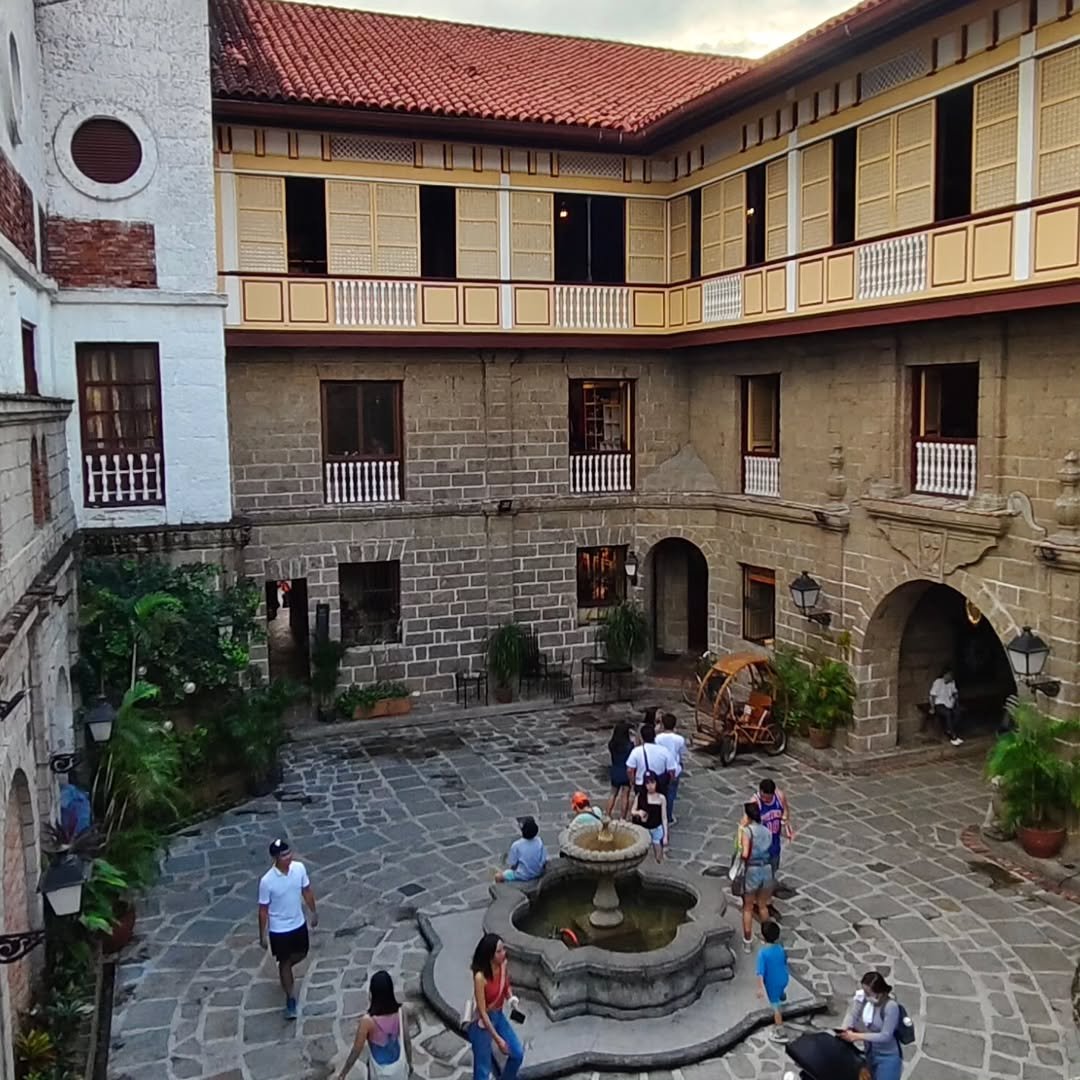
Travel Tips for Tourists Visiting Fort Santiago
A visit to Fort Santiago Intramuros is an exciting and educational experience. However, to make the most of your trip, it’s essential to prepare in advance and be aware of important safety tips, packing essentials, budget-friendly options, and cultural etiquette. Here’s a guide to help you enjoy a smooth and hassle-free visit to Fort Santiago Philippines.
Safety Tips for Visiting Fort Santiago
While Fort Santiago Intramuros is generally a safe and tourist-friendly destination, it’s always best to take precautions, especially when traveling in a busy area.
- Be aware of pickpockets – Like many crowded tourist destinations, be mindful of your belongings, especially in public areas, entrance gates, and souvenir shops. Keep your bags zipped and valuables secured.
- Avoid isolated areas at night – While Fort Santiago closing time is 6:00 PM, certain areas can feel isolated as the sun sets. Stay in well-lit, populated areas.
- Follow security regulations – Guards are stationed throughout the site to ensure tourist safety. If you have questions or need assistance, don’t hesitate to approach them.
- Stay hydrated – Manila’s weather can be hot and humid, so carry a water bottle and drink regularly to avoid dehydration.
Packing Essentials for Your Visit
When visiting Fort Santiago Intramuros, packing the right items can enhance your comfort and ensure a smooth sightseeing experience.
- Umbrella or Hat – The sun can be intense, especially during midday. An umbrella or hat provides shade and protection from the heat.
- Sunscreen – Protect your skin from the strong Manila sun, especially if you plan to explore the dungeons of Fort Santiago or the fort walls.
- Comfortable Walking Shoes – The fort has cobblestone paths and uneven surfaces, so wear comfortable, slip-resistant shoes.
- Fort Santiago Map – While there are directional signs inside Fort Santiago, having a map or using Google Maps can help you navigate easily.
- Camera or Smartphone – Fort Santiago photos are some of the most picturesque in Manila, so bring a camera to capture the Spanish-era walls, gardens, and Rizal Shrine.
Budget Tips to Save Money
If you’re traveling on a budget, here are a few ways to explore Fort Santiago without overspending:
- Opt for self-guided tours – While Klook Fort Santiago and private guides offer valuable insights, self-guided tours with a Fort Santiago map are a great way to save money.
- Visit during promotional periods – Keep an eye out for Fort Santiago entrance fee 2025 discounts, especially for students, seniors, and group tours.
- Explore nearby free attractions – After visiting Fort Santiago Intramuros, check out Manila Cathedral, Plaza Roma, and San Agustin Church, which are free to enter.
- Bring your own snacks – There are cafés and food stalls nearby, but bringing your own bottled water and light snacks can help cut costs.
Cultural Etiquette for a Respectful Visit
As a historical and cultural landmark, Fort Santiago Philippines holds great significance. Observing proper etiquette and respect ensures a pleasant experience for all visitors.
- Respect historical artifacts – Avoid touching exhibits inside the Fort Santiago museum and preserved structures like José Rizal’s prison cell.
- Follow dress codes for religious sites – If you plan to visit San Agustin Church or Manila Cathedral nearby, wear modest clothing out of respect.
- Keep noise levels low – Many areas inside Fort Santiago are places of reflection and remembrance, such as the dungeon Fort Santiago and the Rizal Shrine. Be mindful of loud conversations or disruptive behavior.
- Dispose of trash properly – Help keep Fort Santiago clean and well-preserved by using designated trash bins.
By following these Fort Santiago travel tips, you’ll enjoy a smooth, educational, and memorable visit to one of Manila’s most iconic historical landmarks.
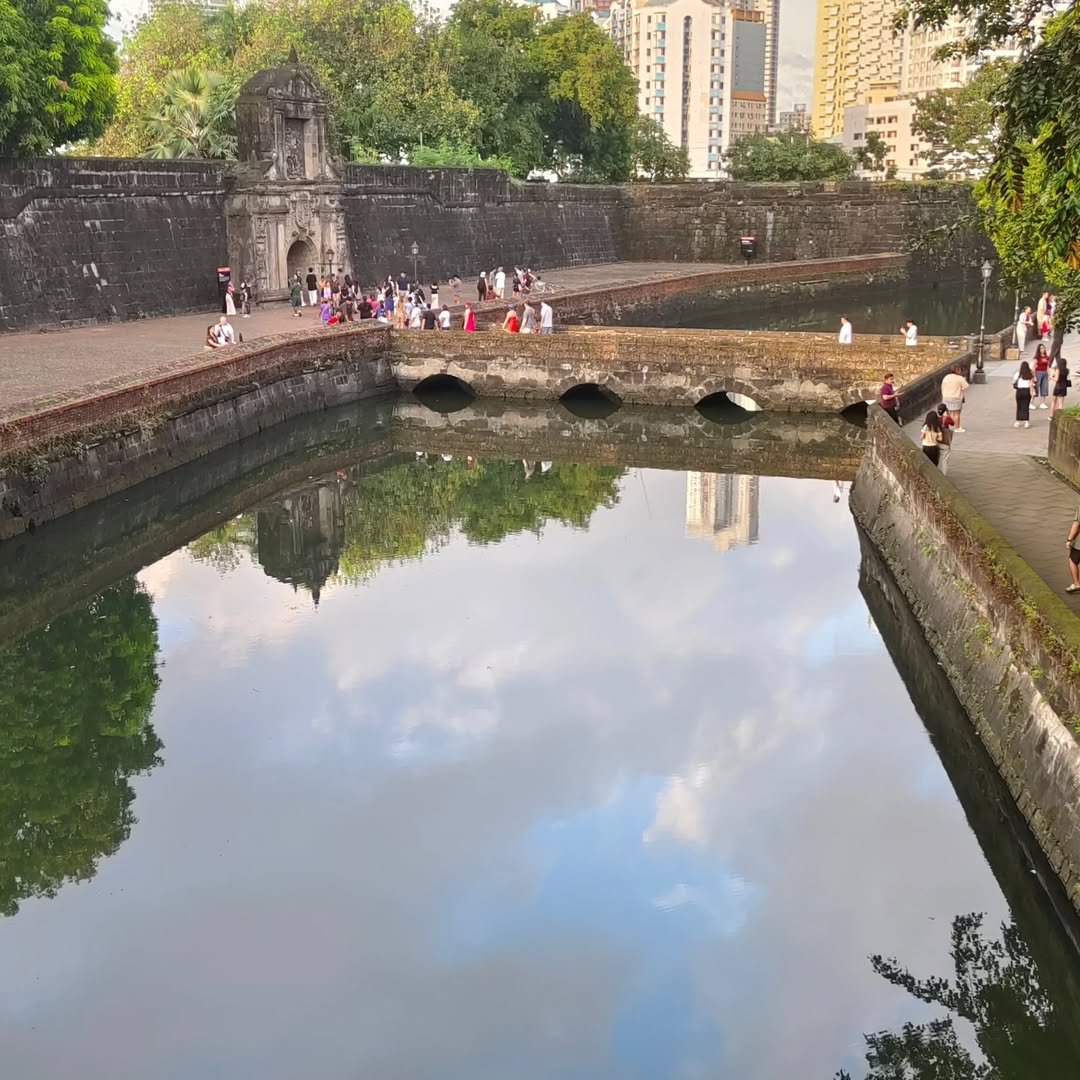
Conclusion: Why You Should Visit Fort Santiago
Fort Santiago Intramuros is more than just a historical landmark—it is a symbol of resilience, patriotism, and Philippine heritage. Whether you are a history enthusiast, a cultural explorer, or a photography lover, this iconic Spanish-era fortress offers a unique and enriching experience.
What is Fort Santiago Known For?
Many visitors ask, “What is Fort Santiago known for?” The answer lies in its historical significance and architectural grandeur:
- Its Role in Philippine History – From the Spanish colonization to World War II, Fort Santiago Philippines has witnessed the country’s most significant historical events.
- The Imprisonment of José Rizal – Inside the Fort Santiago museum, visitors can walk through Rizal’s prison cell, where he spent his final days before execution.
- The Dungeon of Fort Santiago – A haunting yet important site, the dungeons of Fort Santiago bear witness to the suffering of prisoners during Spanish rule and World War II.
- Spanish-Era Architecture – With its massive stone walls, arched gates, and well-preserved ruins, Fort Santiago Intramuros showcases centuries-old Spanish military design.
Plan Your Visit for the Best Experience
To make the most of your trip, plan ahead by checking Fort Santiago opening hours and ticket prices. Consider these important travel tips:
- Visit during the dry season (December to May) for the best weather conditions.
- Arrive early in the morning or late afternoon to avoid extreme heat and large crowds.
- Check Fort Santiago entrance fee 2025 and ticket discounts for students and seniors.
- Bring a Fort Santiago map for easy navigation.
For a more immersive experience, book a Fort Santiago tour through Klook Fort Santiago, where you can join expert-led guided tours and explore Intramuros’ best attractions.
A Journey Through Time
Whether you are walking through the historic gates, exploring the dungeon Fort Santiago, or capturing Fort Santiago photos, this site will leave you with a deep appreciation for the Philippines’ history and culture. A visit to Fort Santiago Intramuros is truly an experience like no other—one that takes you back in time and allows you to reflect on the nation’s past and resilience.
